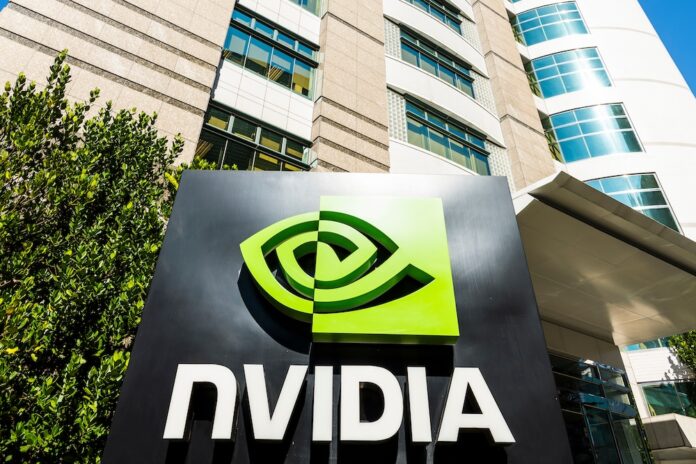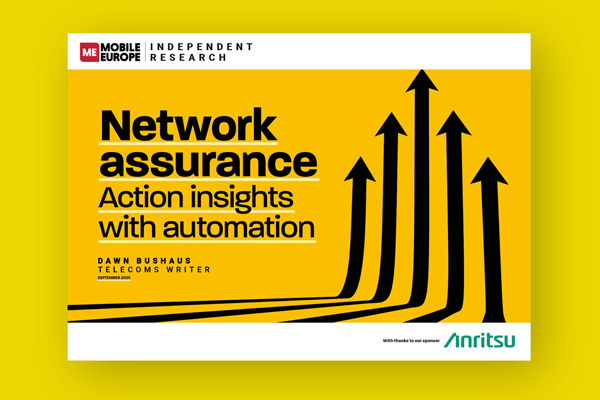T-Mobile US will also collaborate with Nokia and Nvidia to drive and test AI-RAN technologies as a part of a 6G development process
Nvidia has set forth its intentions to tempt telcos with AI-RAN as it paints a picture of 6G being AI native mobile networks and AI networking infrastructure. The chip giant has announced a strategic partnership with Nokia to add Nvidia-powered, commercial-grade AI-RAN products to Nokia’s RAN portfolio. To demonstrate intent, Nvidia is also investing $1 billion in Nokia at a subscription price of $6.01 per share.
The two reckon the resulting product suite will enable communication service providers to launch AI-native 5G-Advanced and 6G networks on Nvidia platforms and cite an Omdia stat that the AI-RAN market is going to exceed a whopping “cumulative $200 billion by 2030” – which means 5G and 5G Advanced have some work to do given there is little chance of a 6G commercial network by then.
They claim the partnership marks the “beginning of the AI-native wireless era” which no doubt miffs SoftBank somewhat given that operator has literally deployed its Aitras converged AI-RAN solution at Nvidia’s headquarters in Santa Clara. Launched in November 2024, the Aitras converged AI-RAN solution that utilises Nvidia AI Aerial-based accelerated computing platforms and fully software-defined vRAN (virtual Radio Access Network).
In March SoftBank announced AI-RAN partnerships with both Nokia and Ericsson. In fact, with the Swedish vendor, their evaluation confirmed the feasibility of AI-RAN utilising the Nvidia GH200 Grace Hopper Superchip and Ericsson Cloud RAN. Working with Nokia, SoftBank integrated a new function into the operator’s Aitras orchestrator which allows AI and vRAN to coexist on a single server with GPUs, while dynamically optimising resource allocation – essentially AI-RAN, or at least, “AI and RAN”.
T-Mobile steps up
T-Mobile US will also collaborate with Nokia and Nvidia to drive and test AI-RAN technologies as a part of the 6G innovation and development process. “Our collaboration…marks an important step toward shaping the future of connectivity as we develop the innovations that will power the 6G era,” said T-Mobile US CTO John Saw.
“Building on the foundation established by the AI-RAN Innovation Center in 2024, this strategic initiative reinforces T-Mobile’s leadership in driving the US wireless industry forward. Beginning in 2026, T-Mobile will conduct field evaluations and testing of advanced AI-RAN technologies to ensure they meet the evolving needs of our customers as we move toward 6G,” he added.
Nvidia and Nokia said their new partnership will focus on delivering distributed edge AI inferencing at scale, providing the foundation to support AI-powered consumer experiences and enterprise services at the edge. And while this part of the market is yet to be defined, it is creating a lot of buzz. That said, telcos are only too aware of the hype around mobile edge compute and the subsequent failure of that market to align with early analysts expectations for it.
The road ahead
Nvidia has introduced the Aerial RAN Computer Pro (ARC-Pro), a 6G-ready computing platform designed to integrate connectivity, computing and sensing capabilities. Nokia will embed ARC-Pro into its RAN portfolio and accelerate the deployment of its 5G and 6G RAN software on the Nvidia CUDA platform, enabling operators to move towards AI-RAN networks through software upgrades.
Nokia’s anyRAN framework will incorporate ARC-Pro to enable a software-defined evolution of both Cloud RAN and purpose-built RAN systems. Its AirScale baseband architecture will support the coexistence of existing and new modules as part of this transition. Dell Technologies will provide PowerEdge servers as the computing infrastructure for Nokia’s AI-RAN solution, offering scalability and upgrade options to support future network developments.
The Nokia–Nvidia AI-RAN platform combines AI and radio access workloads on a unified, accelerated infrastructure, allowing network operators to enhance performance and efficiency while preparing for 6G, according to the vendors. The system will enable AI algorithms to improve spectral and energy efficiency and host edge AI services.
Nokia and Nvidia will also work together on AI networking solutions, including integrating Nokia’s SR Linux software with Nvidia’s Spectrum-X Ethernet platform and exploring the use of Nokia’s optical technologies in future Nvidia AI infrastructure.
Worldwide RAN market flatline
Tie-ups with Nvidia are going to become more commonplace given the need for the world’s largest telecom equipment manufacturers needing to stimulate operators to buy more kit. Nokia’s move should therefore be seen in the context of a new 6G report by Dell’Oro Group, which concludes the Radio Access Network (RAN) is not a growth market. Worldwide RAN revenues have grown at a 1 percent CAGR since the year 2000 in nominal USD terms.
Adjusted for inflation, the picture is less favourable. As the industry is now entering the second phase of 5G and 6G research is on the rise, the fundamental question is whether the future will be more of the same? “Our long-term position and characterisation of this market have not changed,” said Stefan Pongratz, vice president of RAN and telecom capex research at Dell’Oro.
He added: “The RAN network plays a pivotal role in the broader telecom market. There are opportunities to expand the RAN beyond the traditional MBB use cases. At the same time, there are serious near-term risks tilted to the downside, particularly when considering the slowdown in data traffic.”
Pongratz said the baseline scenario is for the broader RAN market to stay flat over the next 10 years. This is built on the assumption that the mobile network will run into utilisation challenges by the end of the decade, spurring a 6G capex ramp dominated by Massive MIMO systems in the Sub-7GHz/cm Wave spectrum, utilising the existing macro grid as much as possible.
Cumulative 6G RAN investments over the 2029-2034 period are projected to account for 55 to 60 percent of the total RAN capex over the same forecast period. So the market looks to be more of a “slow burn” than a “damp squib” at least.
There will be a role
Regardless of what the AI-RAN edge service model looks like evolving into, AI-RAN will spur innovation at the edge. For example, in August, SoftBank announced the development of a new AI architecture that uses the high-performance “Transformer” AI model that it said delivers an around a 30% improvement in 5G throughput. This was carried out in a live wireless environment compliant with 3GPP 5G standards.
SoftBank has advanced its R&D in AI-based uplink channel interpolation, moving from convolutional neural networks (CNNs) to this new Transformer-based architecture. In live over-the-air trials using GPUs, the Transformer model delivered real-time performance with ultra-low latency of 338 microseconds, 26 percent faster than the CNN, and improved uplink throughput by 8 percent over the CNN, achieving an overall 30 percent gain compared with conventional non-AI methods.
“The next leap in telecom isn’t just from 5G to 6G – it’s a fundamental redesign of the network to deliver AI-powered connectivity, capable of processing intelligence from the data centre all the way to the edge,” said Nokia president and CEO Justin Hotard. “Our partnership with Nvidia, and their investment in Nokia, will accelerate AI-RAN innovation to put an AI data centre into everyone’s pocket. We’re proud to drive this industry transformation with Nvidia, Dell Technologies and T-Mobile US.”




